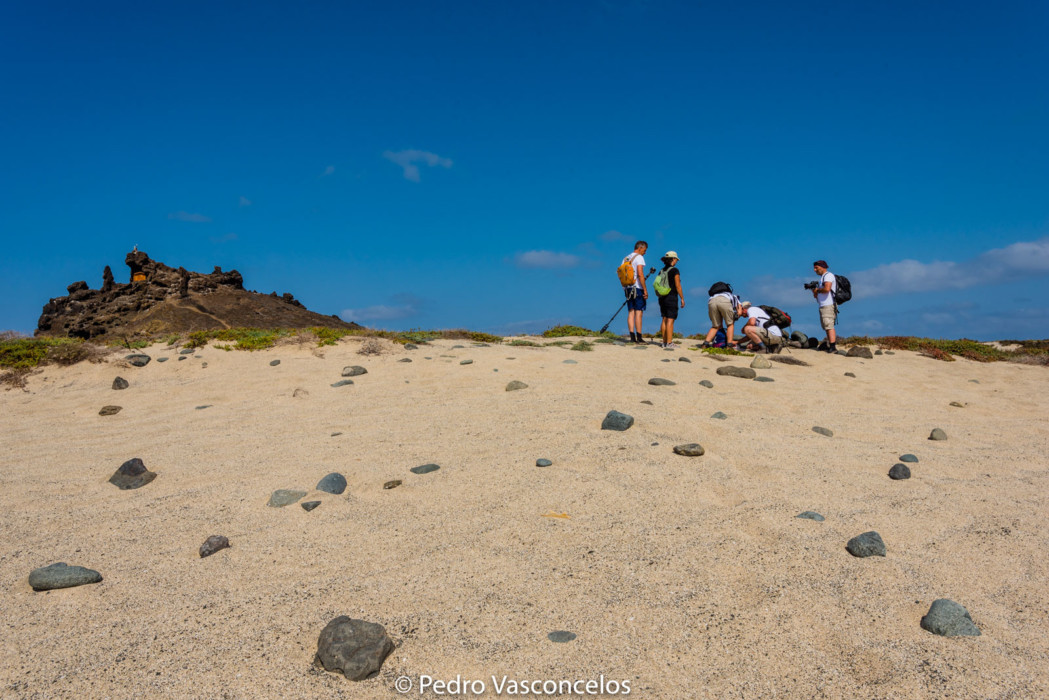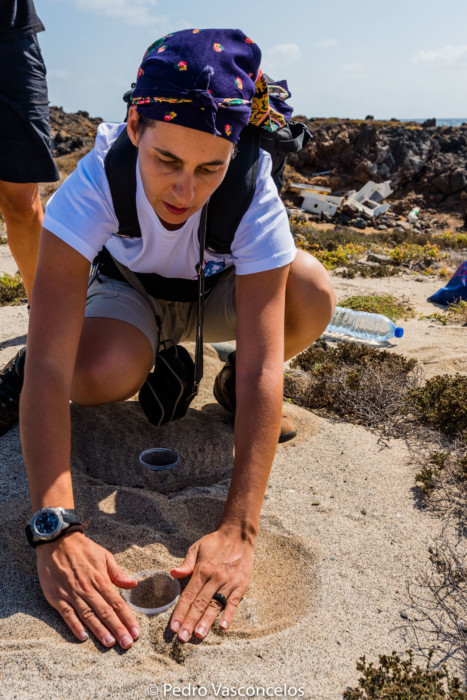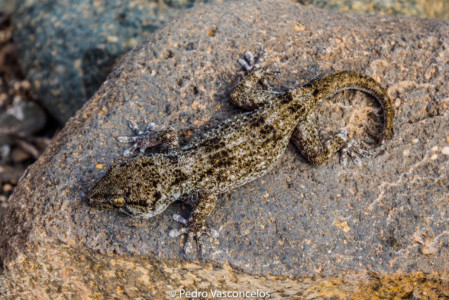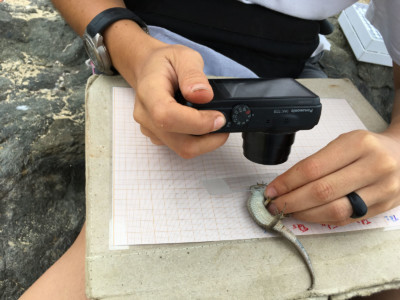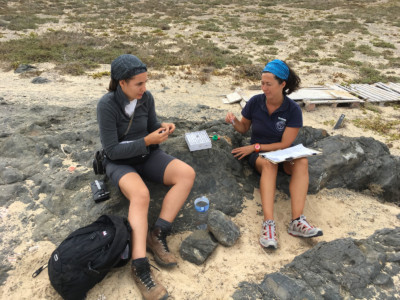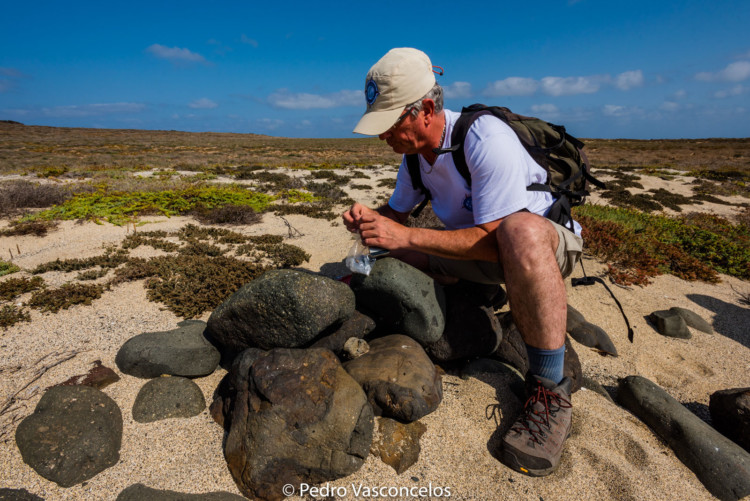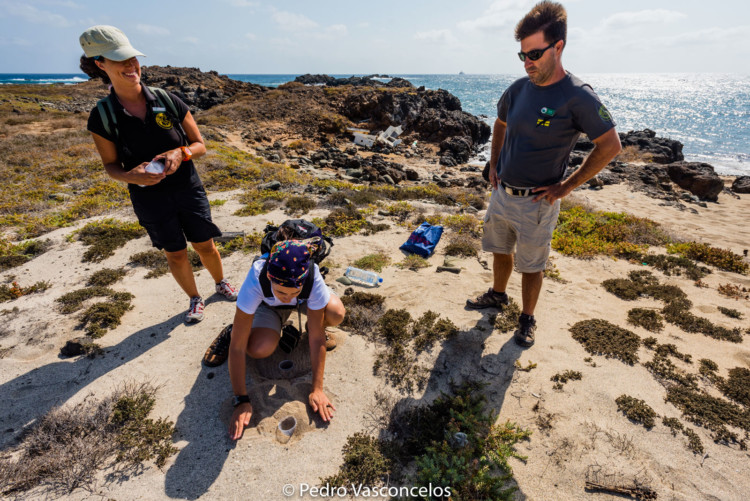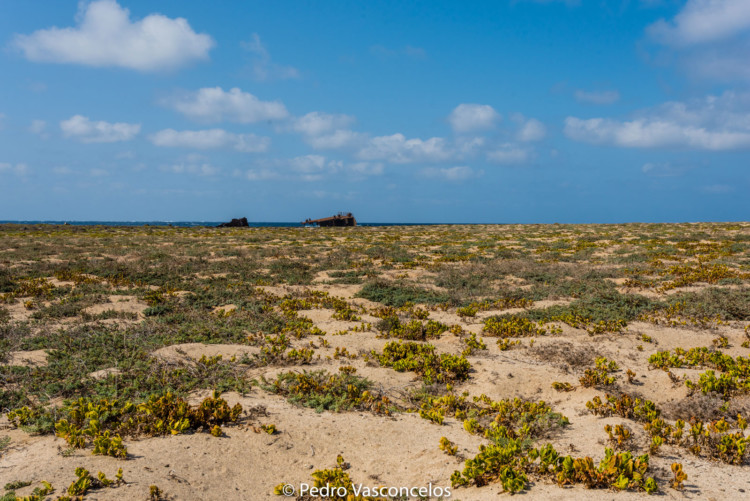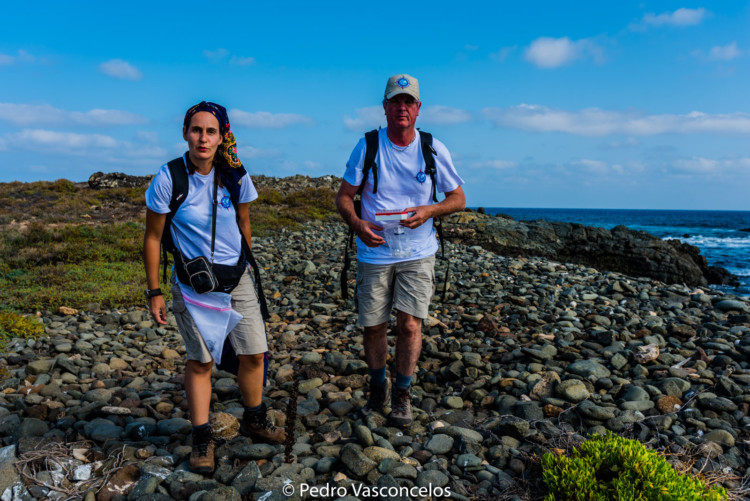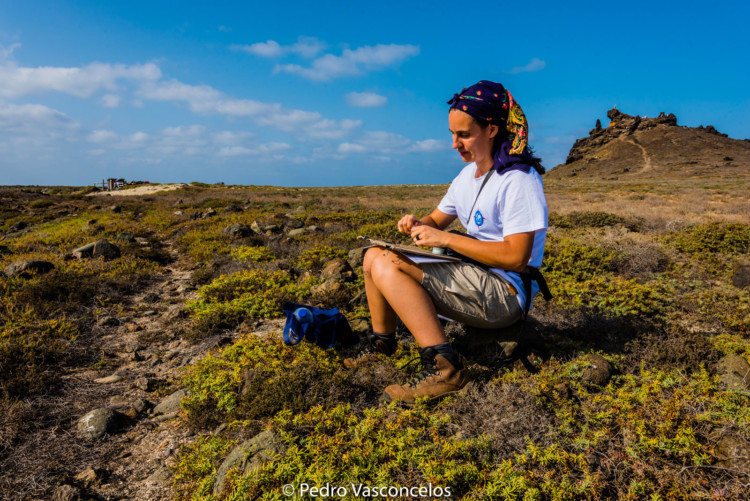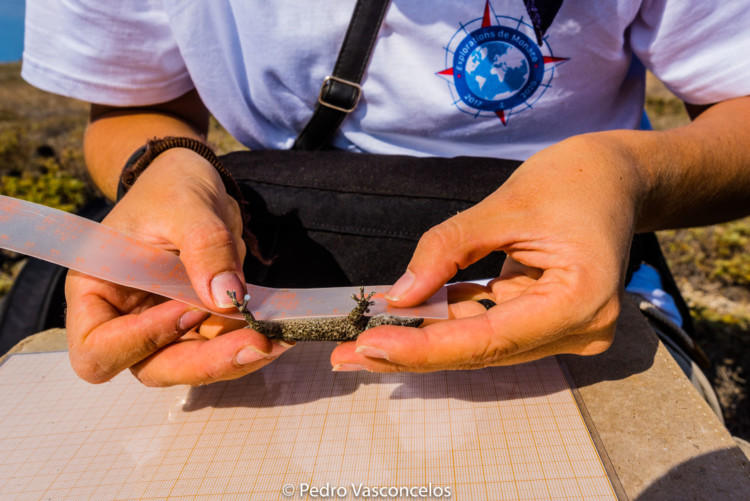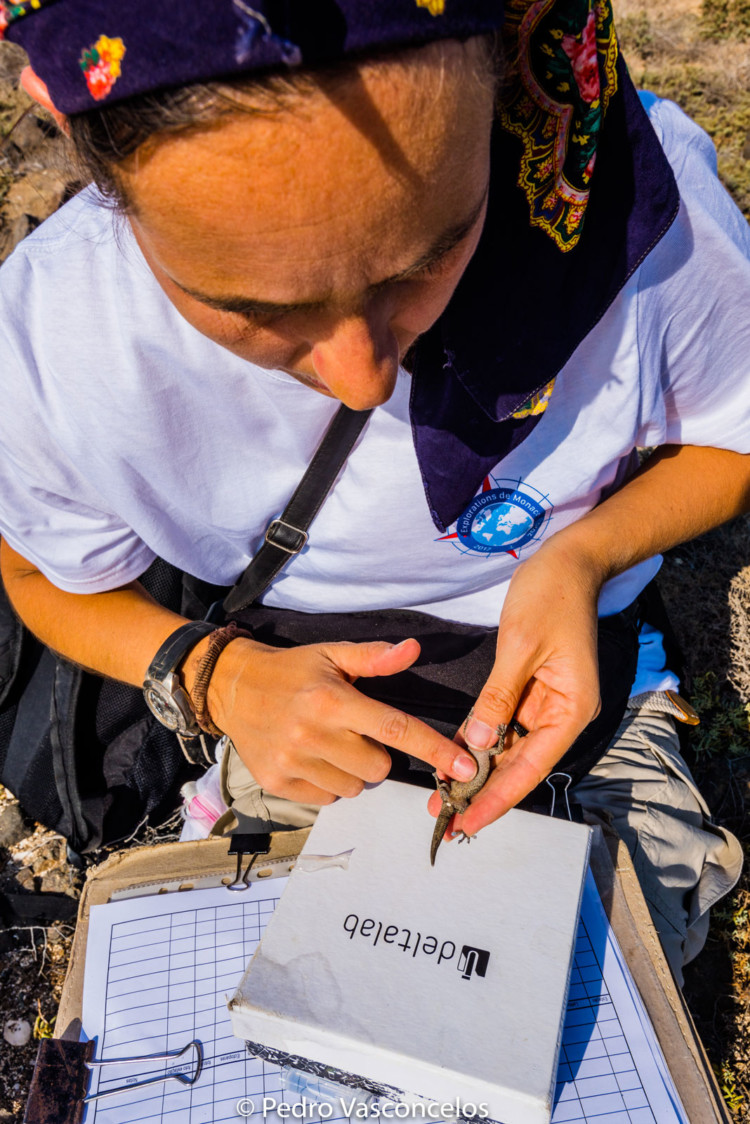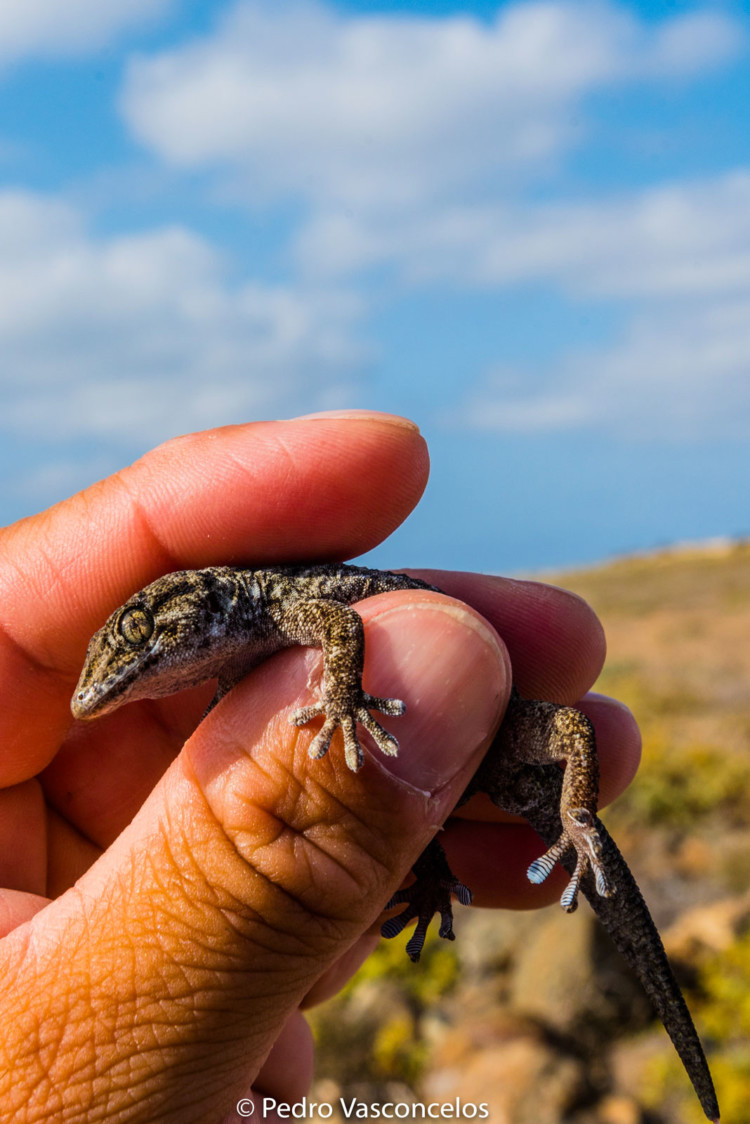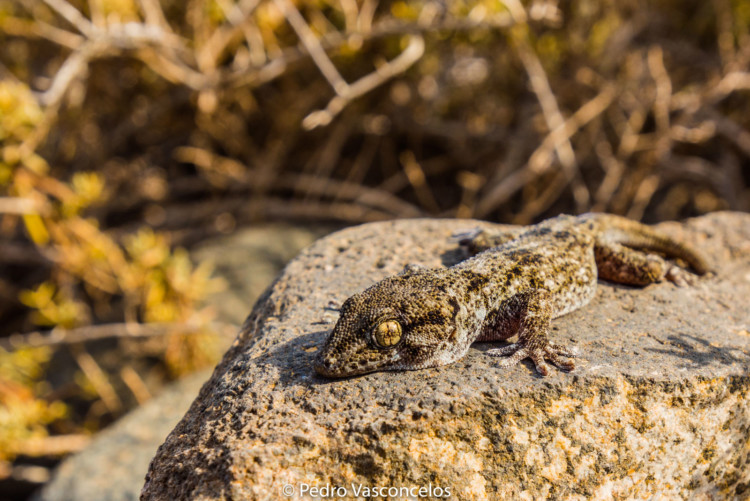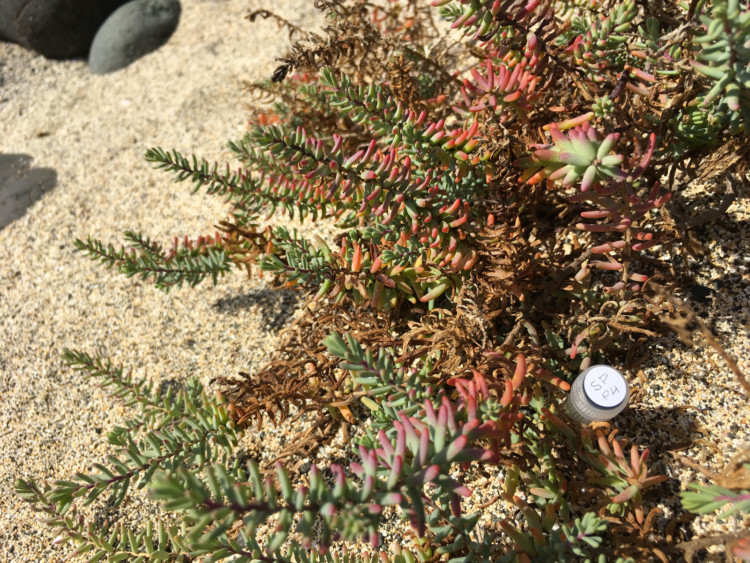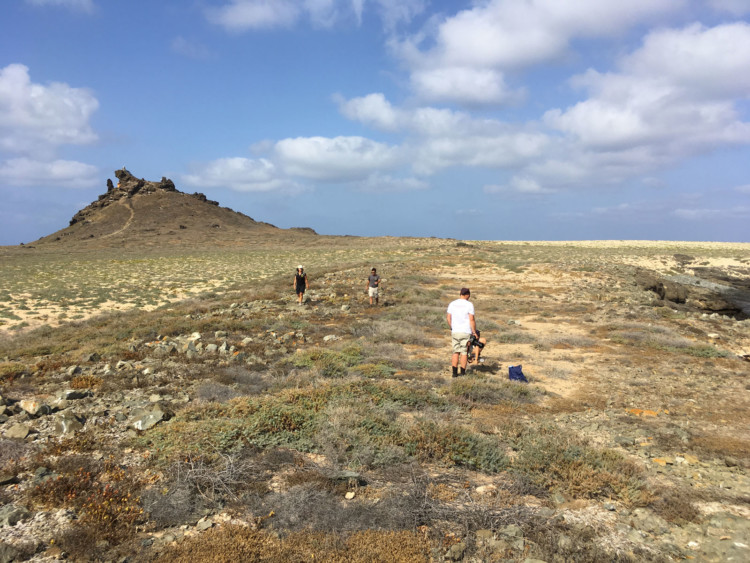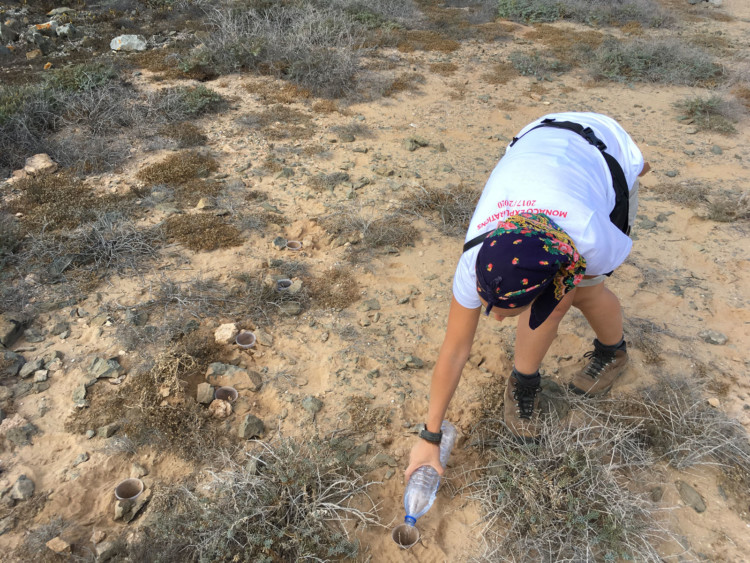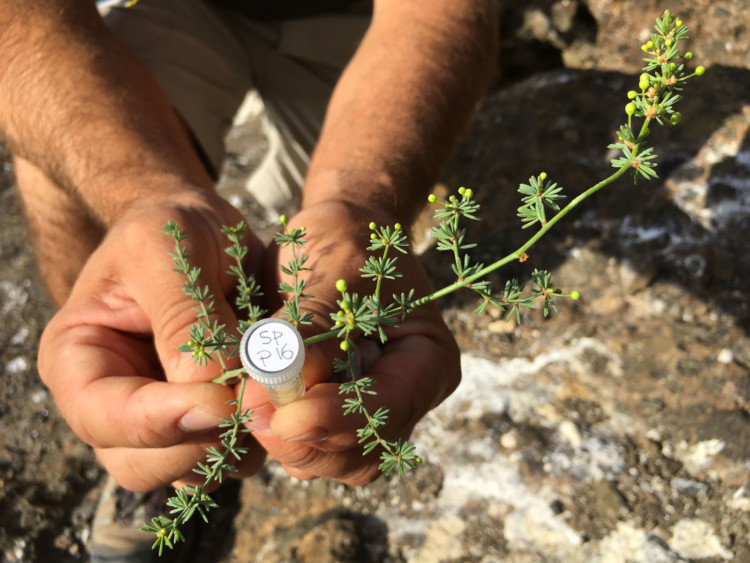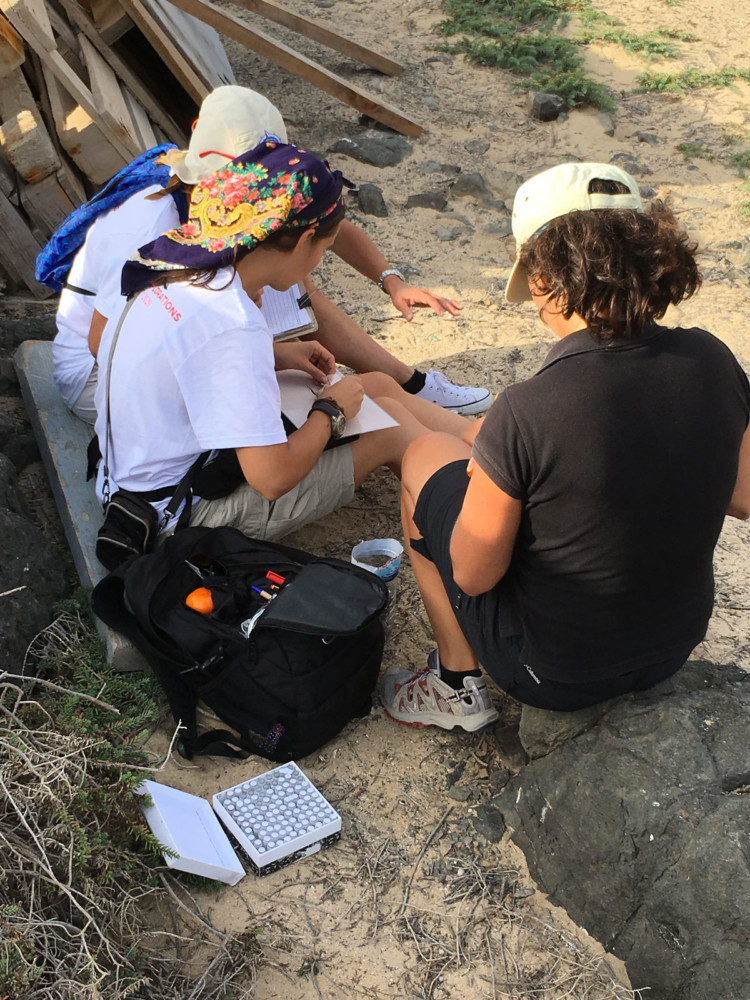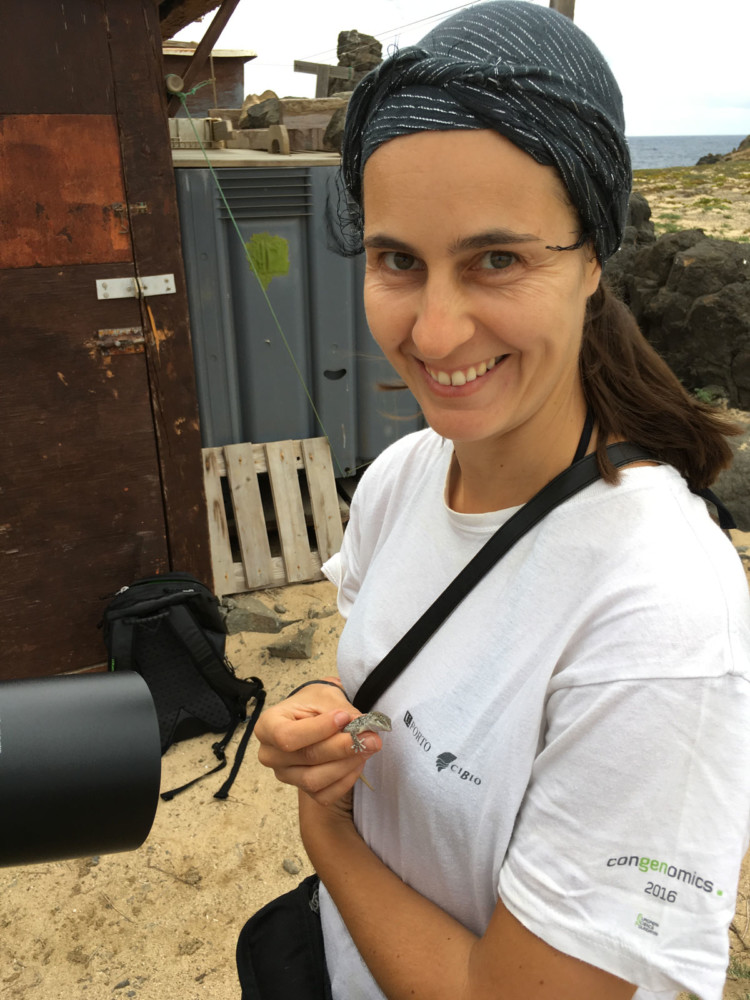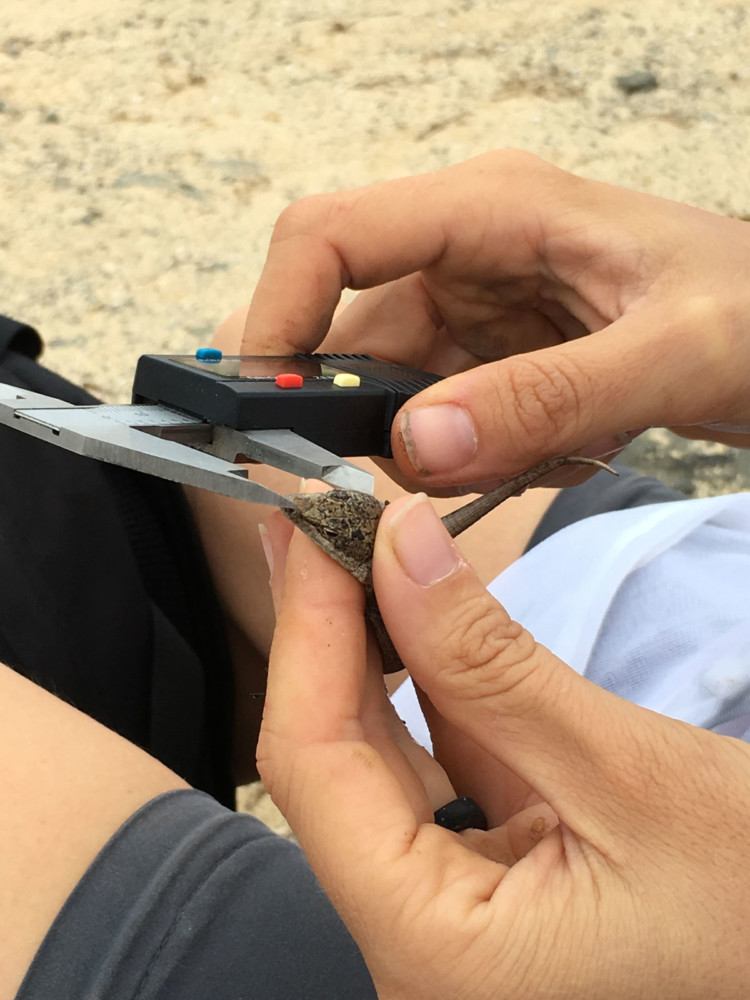We left the island of Madeira for the last time and traveled south to the Selvagem Islands where we will focus on lizards, geckos, and seabirds before continuing south to Cabo Verde.
Raquel Vasconcelos (above, right) is in the 6th year of her post doc at CIBIO-InBIO , the Research Center of Biodiversity and Genetic Resources which belongs to the University of Porto, and IBE (CSIC-UPF), Institute of Evolutionary Biology.
While earning her PhD, Raquel reviewed the taxonomy and systematics of the 3 genera that exist in Cabo Verde, one of which is the group of the Chioninia – the endemic skinks of Cabo Verde. Raquel is on board with us so that she can collect samples from the lizards and geckos in the Selvagem Islands as well as in Cabo Verde.
The Selvagem Islands are a difficult place to sample for researchers because they are difficult to travel to. Monaco Explorations has provided a unique opportunity for Raquel to collect samples here.
Raquel collected dozens of samples from the Teira dugesii (lizard) and Tarentola bischoffi (gecko).
In order to obtain samples from the lizards, Raquel set pitfalls with fruit. She explained that the geckos are really lazy and to collect them she only needs to turn over a rock and pick them up!
Raquel extracts and collects fecal pellets (poop) and removes little 1mm of the tip of the tail. Taking tail tips is not painful for the reptiles, they grow back, and it allows Raquel to know which reptiles she has already sampled so she doesn’t sample the same one twice.
Extracting the fecal pellets is a great way to sample because it is non-invasive, and gives an idea of what the reptile has eaten with a wider range of taxa due to the way they are able to process the DNA. This process is called “blasting sequencing”. This allows research to be done much faster than in the past because they don’t rely on taxonomical expertise. For example, without sequencing if a researcher would find a tiny leg of an invertebrate, they would have to find the right taxonomist to correctly identify the species. Instead, with DNA analysis (metabarcoding) they detect the DNA sequences to know what is present. The only thing this relies on is a good database to compare the sequences against. Worldwide databases for this such as NCBI or BOLD are repositories of millions of sequences.
The outcome of this sequencing allows researchers to understand what the reptiles prey on, and the ecological relationships between the species – like plants, birds, fish, etc. It also helps in understanding of their diet.
Raquel also did a reference collection, taking leaf tips from dozens of plants so that their sequence can be put in the database if they did not already exist. It is likely that the endemic plants of the Selvagems would not be in the database because it is a difficult place to get to. For the same reason, Raquel also does a reference collection of the invertebrates.
